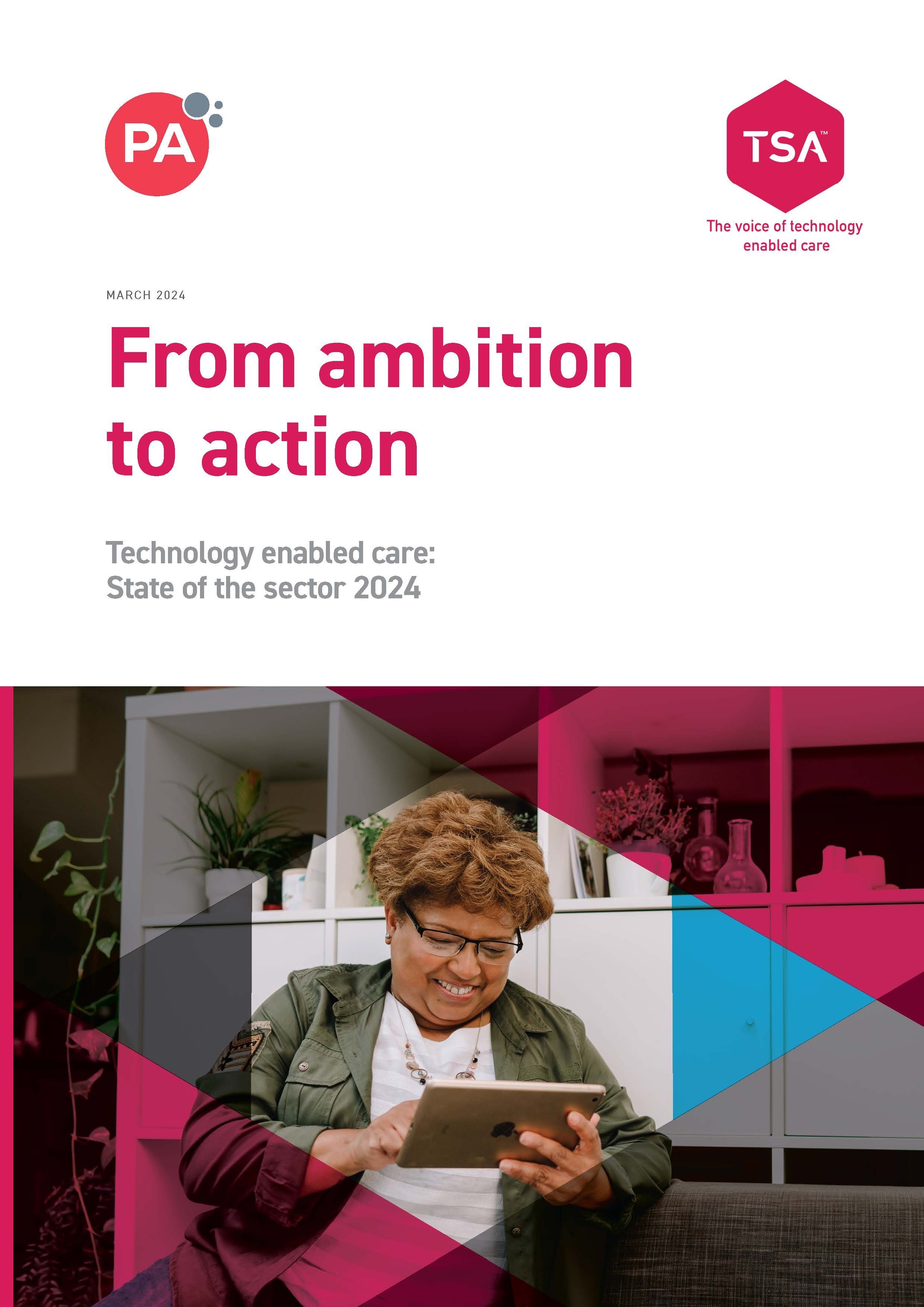
Building the case for investment in TEC: State of the Sector report 2024
05 June 2024
The inaugural State of the Sector report, a collaborative report between TSA and PA Consulting, was compiled using a mix of qualitative and quantitative research. This included analysis of primary data (online surveys and TSA data sets) as well as secondary data from sector stakeholder literature and national data sets (ONS, NHS etc.) In this research, they investigated how we can build the case for TEC investment.

'From ambition to action' State of the Sector report 2024
The potential roles for TEC can be seen across society, whether it’s helping to break down barriers to work for people with disabilities, or boosting attainment in schools. The public’s desire to utilise technology is also clear.
Eight out of ten adult social care leaders identified constructing a credible financial case for TEC investment as the primary obstacle to achieving their TEC goals within the next year. The starting point in building a compelling case for investment is by being clear about the outcomes you want to achieve. Clearly defined outcomes become the north star for TEC development, guiding and optimising the design of pathways and services.
With local government struggling to cope with financial challenges, spending is being scrutinised to an even greater degree. Investment cases for TEC must be able to demonstrate how TEC will help to reduce demand while delivering better outcomes. Councils in England are spending between £170m and £200m on TEC services – equating, on average, to 0.8-1.1% of adult social care budgets. The financial benefit that could be achieved through TEC is estimated at £0.4-0.6bn over five years – a return on investment of 60%. TEC is not statutory and therefore is not protected by legislation prescribing what should be provided, when it should be used and who should provide it. As a result, the level, type and funding of TEC services can vary enormously
Our research reveals:
74% of adult social care leaders say building a case for financial investment in TEC – and developing a long-term funding approach – are key challenges they will have to overcome
95% of adult social care leaders say being able to measure the financial benefit of TEC and its positive impact on people will help them reach their TEC objectives
Any savings on care at home services may be invested to fund the development of technology further if we can embed it into personal budgets and this will help staff engage with the use of technology if they can also see outcomes improving individuals’ lives. Survey of senior leaders in adult social care, 2024
How TEC is funded
Our research reveals 30% of councils are increasing the funding for TEC services over the next 12 months, with 60% expecting funding in TEC to remain the same. A further 10% expect their funding of TEC to decrease. Funding for TEC services comes from a number of different sources, with the main source being adult social care budgets. Research reveals 30% of councils are increasing the funding for TEC services over the next 12 months, with 60% expecting funding in TEC to remain the same. A further 10% expect their funding of TEC to decrease.37
Better Care Fund (BCF)
The two objectives of BCF are to enable people to stay well, safe and independent at home for longer and provide people with the right care, at the right place, at the right time. Both of these objectives can be supported by TEC. A total of £343.5m of BCF funding (3%) was directed towards assistive technology and equipment in 2022-23,38 although the figure may be higher due to different definitions and reporting arrangements
32% of adult social care leaders expect funding from the Better Care Fund to increase in the next 12 months, with 13% expecting it to decrease
Disabled Facilities Grant (DFG)
DFGs are capital grants available to people of all ages and in all housing tenures (i.e. whether renting privately, from a social landlord or council, or owner occupiers) to contribute to the cost of adaptations. They are awarded via local authorities who, through their housing assistance policies, have flexibility around how they are used. UK government guidance states they can be used for assistive technologies, improvements to digital infrastructure within the home to support further TEC, and for environmental controls such as smart lighting and heating. One of the key perceived barriers to the use of DFGs to fund TEC is they cannot fund ongoing maintenance and support costs – the cornerstone of many quality TEC services. However, the UK government has made it clear those costs can be managed “in tandem with other local and national public services and programmes”.
34% of adult social care leaders expect funding from the Disabled Facilities Grant to increase in the next 12 months, with 8% expecting it to decrease.
To read more, download the full report here
If you have any questions, please email admin@tsa-voice.org.uk






